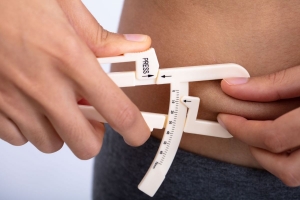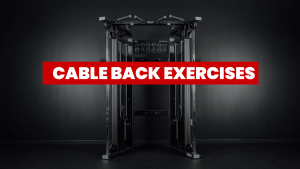To figure out how many calories you should eat per day (caloric intake), the first important step is to figure out how many calories you’re currently burning per day. The calorie calculator below will give you a good baseline of calories burned per day by healthy adults of your height, weight and activity level that you can then use to make changes to allow you to increase or decrease your caloric intake based on your goal of gaining muscle or for weight loss purposes.
Fill out the details in the calorie calculator below based on your current stats and activity level. If you’re not sure which Activity Level best describes you, check the section entitled ‘Which Activity Level Should I Choose?’ below. This calorie calculator is also the perfect tool to figure out daily or weekly calorie target you’d need to eat to reach your goal weight depending on how quickly you’d want to reach those weight loss goals.
Based on your stats
2,679
Total Daily Energy Expenditure (TDEE)
1,786
Basal Metabolic Rate (BMR)
By activity level
Calories to lose weight
Calories to gain weight
HOW DOES THE CALORIE CALCULATOR WORK?
The calorie estimate you got above isn’t just random guesswork. It’s based on a scientific formula called the Mifflin-St. Jeor equation.
This is considered one of the most accurate equations out there for determining your daily calorie intake.
Let’s break down how it works in simple terms:
STEP ONE: BASAL METABOLIC RATE
The calculator takes the current weight, height, age, and activity level of an individual person and crunches the numbers to estimate your Basal Metabolic Rate (BMR).
Basically, this is the number of calories a typical person burns at rest just to stay alive (think breathing, heart beating, and brain functioning).
STEP TWO: PHYSICAL ACTIVITY
Then, it factors in your physical activity based on levels of exercise, whether you’re crushing it in the gym doing vigorous exercise or just going about your everyday activities with light activity.
It does this by using an activity multiplier.
If you’re not sure which activity level is right for you based on your own exercise regimens, we answer that below.
STEP THREE: PLUG IT INTO THE FORMULA
Here’s the formula in action. Simply plug in the variables into the estimation formula and you are left with your suggested daily calorie intake.
Give it a try for yourself!
MIFFLIN-ST. JEOR EQUATION
For men: 66 + (6.23 × weight in lbs) + (12.7 × height in inches) – (6.8 × age)
For women: 655 + (4.35 × weight in lbs) + (4.7 × height in inches) – (4.7 × age)
Activity Factor Level: This adjusts for how much you move for both adult females and adult males:
- Sedentary (little to no exercise): BMR × 1.2
- Lightly active (light exercise/sports 1–3 days per week): BMR × 1.375
- Moderately active (moderate exercise 3–5 days per week): BMR × 1.55
- Very active (hard exercise 6–7 days per week): BMR × 1.725
- Super active (daily intense exercise or physical job): BMR × 1.9
What you get is your daily target caloric intake: the number of calories you need to maintain your weight.
From there, you can tweak your goal calorie level to achieve a healthy weight range.
WHICH ACTIVITY LEVEL SHOULD I CHOOSE?
When choosing your activity level, honesty isn’t optional, it’s essential.
The calorie calculator isn’t an exact science; it’s a tool. And tools work best when you give them the right data.
Your daily calories are calculated based on your non-exercise activities (walking, cleaning, standing) and intentional workouts.
If you’re not realistic, you’ll either under-fuel your body’s energy requirements, leading to fatigue, excessive weight loss and other health concerns, or overestimate, causing excess calories to creep in.
Here’s the breakdown on how to choose your activity level:
Sedentary: Minimal movement beyond sitting. Perfect for those whose daily activities don’t involve purposeful exercise or go beyond work desks and couches.
Lightly Active: Some movement through the day or light exercise a few times per week.
Moderately Active: You work out several days per week (such as brisk walking or aerobic exercise) and stay on your feet with moderate effort.
Very Active: Think intense workouts or a physically demanding job. Your elevated heart rate activity burns serious calories per week.
Super Active: Athletes, very active people or those training daily with high energy output in intense exercise.
Your activity multiplier adjusts your ideal calorie intake to fuel your body weight goals, whether that’s a healthy weight loss approach, muscle growth, or the pace of weight gain needed to bulk up.
Too low, and you’ll plateau in weight loss. Too high, and you’ll face the disadvantages of calorie surplus.
HOW MANY CALORIES SHOULD I EAT PER DAY FOR WEIGHT LOSS?
Unfortunately, there’s no one-size-fits-all answer to this. How many calories you need depends on your body weight, activity level, and goal for sustainable weight loss.
But here’s a proven formula: aim for a calorie deficit (daily calorie reduction) of about 200–500 calories per day.
Over a period of time, that adds up to one or two pounds per week, which is considered healthy weight loss.
Start by using a calorie calculator to estimate your daily calories based on your body height, weight, and activity level, including both non-exercise activities and workouts with elevated heart rate activity.
Once you’ve got your number, here’s where the real work begins. This isn’t just about numbers.
It’s about understanding your calorie environment and making informed decisions about your food, nutrition, and activities. You can use a calorie tracking app to give you a close calorie count so you can reach your goal calorie level each day to achieve sustainable weight loss.
Once you reach your goal weight, you can slowly increase your calorie intake to achieve long-term weight maintenance.
HOW DO I CALCULATE THE CALORIES NEEDED FOR MUSCLE GAIN?
If you want to pack on muscle, you’ve got to eat more, but not just anything.
The key to successful muscle gain is calculating your actual calorie needs, balancing your calorie breakdown, and fueling your body with the right mix of nutrient-dense foods in a proper diet. This healthy diet will include animal foods and other sources of protein, as well as other natural unprocessed foods such as whole grains and starches, vegetables, fruits and healthy fats.
First, calculate your maintenance calories using the calorie calculator above. This gives you the estimate of calories your body needs to maintain its current weight.
From there, add a surplus of 200 to 500 calories per day depending on your goal weight.
For example, if your maintenance is 2,000 calories, try to eat between 2,200 and 2,500 calories to encourage muscle growth while minimizing fat gain.
CALORIES BURNED FROM COMMON EXERCISES
Whether you’re looking to add muscle mass or lose weight or body fat, you’ll want to take into account how many calories you’re burning through your regular exercise activity as well.
Take a look at the table below to determine how to adjust your eating habits according to how many calories you are burning through exercise on any given day.
| Exercise (1 hr) | 125 lb person | 155 lb person | 185 lb person |
| Baseball / Softball | 239 | 296 | 353 |
| Basketball (Full Court) | 338 | 419 | 500 |
| Cycling (10 mph) | 375 | 465 | 555 |
| Gold (Carry Clubs) | 296 | 367 | 438 |
| Jump Rope (Fast) | 575 | 713 | 851 |
| Martial Arts (Intense) | 669 | 829 | 990 |
| Running (5 mph) | 453 | 561 | 670 |
| Tennis (Singles) | 375 | 465 | 555 |
| Walking (3 mph) | 250 | 310 | 370 |
| Weight Training (Intense) | 400 | 496 | 592 |
TIPS TO HELP WITH GETTING YOUR DAILY CALORIES
Hitting your daily calorie target isn’t just about eating more or less, it’s about eating smarter.
Whether your goal is weight loss, decreasing your body fat level, muscle gain, or finding that perfect weight, these tips will help you maximize the advantages of calorie-focused nutrition while avoiding common mistakes.
CHOOSE QUALITY CALORIES
Not all calories are created equal, and the nature of calories you consume matters. Focus on nutritious ingredients like lean proteins, whole grains, and healthful foods packed with nutrients, while cutting back on refined grains, high amounts of sugar and overly processed food products. For example, protein increases feelings of satiety, which will go a long way in decreasing your consumption of less healthy calories.
Read the Food Label: It’s your go-to source for checking the calorie content and identifying high-quality recipe ingredients. Reduce the obvious culprits like excessive amounts of sugar.
Pay Attention to Food Proportions: Use your plate wisely: balance macronutrients of protein, carbs, and healthy fats. To get a grasp on food proportions, check out the plate visual below.
Avoidance of Foods: Steer clear of high-calorie foods like sugary snacks or empty-calorie drinks.
TRACK AND ADJUST
Consistency is key. Use tools like apps or even a custom nutrition label system to stay on top of your portion of calorie intake.
Whether you’re logging your meals or analyzing your caloric measurements, tracking is the backbone of success.
Measurement of Portions: Be precise. Use kitchen scales or measuring cups for an objective measurement of your portions.
Ingredient Swaps: Upgrade your meals with reduced-fat foods, whole carb sources, or even protein-packed snacks like protein bars.
Alcohol Calories: Cut them out. Those alcohol beverages supply calories without adding value to your goals.
WATCH FOR PITFALLS
The wrong approaches to weight loss and body fat loss can backfire, leading to excessive weight loss, muscle loss, or a plateau in weight loss.
Instead, aim for an effective pace of weight loss. Shooting for around one or two pounds per week can create real change over longer periods of time.
Stick to the Plan: Follow your routine for a couple of weeks before making any major changes.
Adjust for Progress: If your results slow, reevaluate your calorie difference and tweak your intake.
Avoid Over-Restriction: Yes, low-calorie foods can help, but cutting calories too much isn’t sustainable and can derail your progress over time.
WHAT ARE THE DISADVANTAGES OF CALORIE COUNTING?
Calorie counting can be a powerful tool, but it’s not without its downsides.
First, it can turn into an obsession, causing people to overlook the importance of health foods and the ideas of nutrition beyond just numbers.
Focusing solely on tracking calories can lead to poor food choices—like choosing junk (like sugary foods) or as your favorite energy source just because it fits your daily target calorie intake.
Another issue? It’s easy to forget that calorie estimates need to be taken with a grain of salt.
The numbers on labels or apps aren’t perfect, and the actual caloric intake you consume may vary.
Over time, relying too heavily on a strict form of calorie counting instead of effective weight loss methods like portion control and meal balance can backfire.
Finally, calorie counting is not always practical for nutrition for people who prefer flexibility.
A strict calorie focus might discourage editing ingredients or experimenting with meals. After all, the sources of calories and types of foods you’re eating is the most important element.
Instead, aim for a sustainable plan: one or two pounds of weight loss or gain per week can be achieved by making smart food choices per week without obsessing over every number.
SHOULD YOU COUNT YOUR CALORIES?
Short answer? Yes, but only for a couple of weeks.
If you’re just starting out with muscle building or fat loss, tracking calories can give you a solid foundation on the type of calories you’re eating.
It helps you understand your food choices, portion sizes, and how to hit your goals consistently.
But here’s the thing: making this a long-term choice per week can be overwhelming and unnecessary.
Once you’ve got a good grasp of what works (balancing health foods, hitting your protein goals, and managing portions), you can ditch the calculator.
Calorie counting? It’s a great tool, but it’s not the end game. Use it to learn, then move on to smarter, more sustainable approaches.
Focus instead on building habits that stick, like choosing nutrient-dense meals and adjusting portions based on your progress. If you have any existing medical issues, it’s always best to seek medical advice and assistance with your daily diet prior to changing your nutrition or your calorie goals.
Don’t have a fully fleshed out nutrition and fitness program that can help you achieve the weight loss or weight gain you’re after? We can help! Check out our ATHLEAN-X programs to see which is the best fit for your goals and fitness level.

- Your calorie intake determines if you lose, maintain, or gain weight, but not all calories are created equal.
- The calorie calculator uses the Mifflin-St. Jeor equation to determine your Basal Metabolic Rate (BMR), adjusts for activity levels with an activity multiplier, and tailors results for weight loss, maintenance, or muscle gain.
- Aim for a calorie deficit of 200–500 calories per day. This leads to 1–2 pounds per week, which is sustainable and effective.
- Add 200–500 calories to your maintenance level for muscle growth.
- Focus on nutritious ingredients like lean proteins and whole grains while avoiding processed snacks.
- Use apps or scales for precise portion control and make smart ingredient swaps like reduced-fat foods.
- Avoid over-restriction to prevent plateaus or excessive weight loss.
- Count your calories, but only for a couple of weeks to build a solid foundation.
- Learn portion sizes and food quality, then transition to habits like balanced meals and consistent progress tracking.
REFERENCES





































